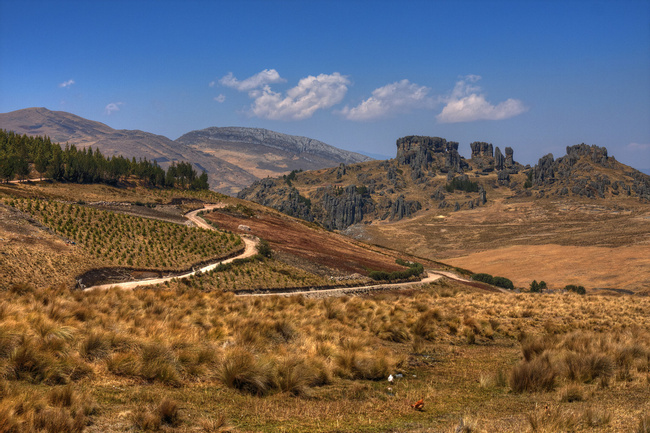
Cumbe Mayo
The ancient aqueducts of Cumbe Mayo continue to baffle archaeologists. Set outside the town of Cajamarca in Peru’s Northern Highlands, Cumbe Mayo is an utterly fascinating place to visit.
More about Cumbe Mayo
The canals at Cumbe Mayo are thought to be at least 3,000 years old. Archaeologists aren’t exactly sure why they were built, but it’s thought that the canals were meant to slow down and regulate the movement of water. The canals’ lines are incredible, turning at perfect right angles over smooth rock. They were likely constructed using obsidian hammers.
The aqueduct winds down the hills toward the city of Cajamarca, stretching out over about five miles (8 km) in length. The canals brought water from the high grounds to the valleys below, which was especially valuable during times of water scarcity. A number of petroglyphs are also scattered around the aqueduct and in surrounding caves. These symbols provide additional insight into the people who constructed the canals.
Strange volcanic rock formations create a bosque de piedras, or rock forest, in the area above Cumbe Mayo. The volcanic pillars, some as tall as 60 feet (18 m), contrast sharply with the grass-covered plains. The erosive forces of wind and rain likely carved out the pillars.
It's more than just having a good time or visiting beautiful places (although that's absolutely a part of it!), it's about being part of a unique experience that stays with you.



